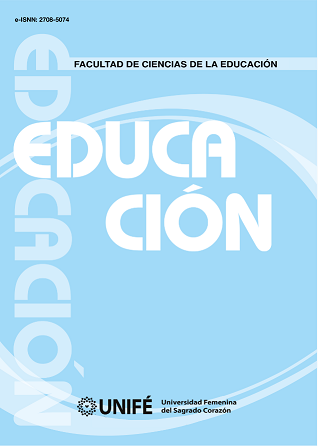The sturge-weber syndrome: a case report in the diagnosis center of language and learning of the UNIFE, reason for learning and professional growth
DOI:
https://doi.org/10.33539/educacion.2018.v24n1.1317Keywords:
Syndrome, angioma, Sturge-Weber, glaucoma, therapy, languageAbstract
The Sturge-Weber syndrome is a neurocutaneous syndrome which severity is determined for the degree to which the brain is affected and the control of the epilepsy. It is a congenital vascular disease characterized for a capillary facial malformation (port-wine stain) associated with venous and capillaries malformations in the brain and in the eye. Also, alterations can be observed in other locations (oral cavity or airway) and neurological symptoms. Founded studies present that the SWS is of unknown etiology, although there is envisage the hypothesis that the capillary malformations are the result of somatic mutations in ectodermal fetal tissues. In the educational level, there is little information about rehabilitation of speech and language, which motivated educators and experts to research and use the ingenuity and creativity to help these children. There are several clinical manifestations of this syndrome, it is important know all of these to get a proper diagnosis, follow-up and treatment of them, thus improving the quality of life of these.



